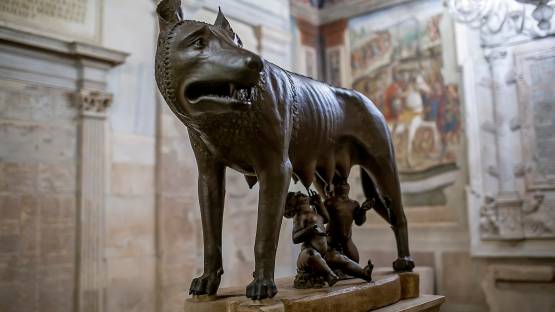Legend says that Rome was founded by Romulus and Remus, twin brothers who after being abandoned as infants, suckled a she-wolf to survive. The image of the young boys at the wolf’s teat has been recreated in countless artworks over thousands of years, but few are as famous as ‘La Lupa Capitolina’, the Capitoline Wolf.
Cast in bronze, the 75-centimetre statue was discovered in the 15th century and was at the time believed to be over one thousand years old. It wasn’t until the 2000s that analysis using a nuclear technique — radiocarbon dating — stunned the world by shattering that belief and firmly dating the statue to just the 12th century.
How could a single scientific technique so quickly and robustly overturn the understanding held for centuries of such an important cultural artefact? A new, freely available IAEA e-learning course on accelerator mass spectrometry (AMS) dating reveals the power of radiocarbon dating, its fundamentals and how to process and interpret its data. The course also expounds upon case studies, including the Capitoline Wolf, and presents an overview of other dating methods and forensic AMS applications.
“Radiocarbon dating has been absolutely transformative in the field of archaeology, and now with the growing proliferation of accelerators, there’s an opportunity to use it more widely also for authentication and provenance,” said Aliz Simon, an IAEA nuclear physicist who specialises in accelerator applications. She and her team developed the e-learning course, funded through the IAEA’s technical cooperation programme, to improve knowledge on radiocarbon dating and AMS techniques. “It’s important that we train those who can be end-users of AMS techniques to improve our understanding of the past or even solve crimes and combat the illicit trade of art, food, medicine and ivory,” Simon said.
AMS dating is a technique for measuring long-lived isotopes, primarily carbon-14, with a mass spectrometer and a particle accelerator. Carbon-14 is a radioactive isotope present in all living organisms. It decays at a steady rate, so by measuring the amount of carbon-14 present in a sample, researchers can determine its age. While measuring carbon-14 as a technique was originally conceived in the late 1940s with the use of liquid scintillation counters and gas proportional counters, today AMS dating is more popular, having proven to be more sensitive, less time consuming and requiring fewer samples.
Radiocarbon dating has been absolutely transformative in the field of archaeology, and now with the growing proliferation of accelerators, there’s an opportunity to use it more widely also for authentication and provenance.










